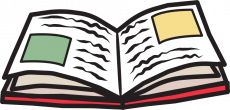Demystifying the Year One Literacy Curriculum: A Guide for Educators
Understanding the literacy curriculum for Year One is essential in order for teachers and parents to support children's reading and writing development. In this blog, we will explore the key skills and knowledge pupils should acquire in Year One, as well as strategies and resources to enhance literacy learning.
Literacy Development in Year One
Year One is a pivotal year for literacy development. Pupils transition from emergent literacy in Reception to becoming independent readers and writers. The literacy curriculum focuses on building strong foundations in reading, writing, speaking, and listening.
In Year One, children learn phonics, decoding skills, and high-frequency words. They develop comprehension strategies, such as predicting, inferring, and summarising. Pupils also practice handwriting, punctuation, and sentence structure. By the end of Year One, they should be reading with fluency and understanding, as well as writing simple sentences.
It is important to note that literacy development is not limited to Literacy lessons, but integrated across the curriculum, providing opportunities for children to apply their reading and writing skills in different subjects.
Supporting and Enhancing Literacy in Year One
Teachers and parents play a crucial role in supporting and enhancing literacy development in Year One. Here are some strategies and resources to facilitate this process:
- Phonics Teaching: This is a key component of literacy learning. Teachers can use systematic phonics programs and resources to teach letter-sound correspondences and blending skills.
- Reading Aloud: Reading aloud to pupils exposes them to a wide range of vocabulary, language structures, and narrative styles. It also fosters a love for reading and helps develop listening comprehension.
- Shared Reading: Shared reading activities involve pupils reading together with the teacher. This promotes reading fluency, word recognition, and comprehension skills. Teachers can use big books, interactive whiteboards, or projected texts for shared reading.
- Writing Opportunities: Provide regular writing opportunities for students, such as journal writing, story writing, and collaborative writing. Encourage students to express their thoughts, ideas, and experiences through writing.
- Individualised Teaching: Differentiated teaching allows teachers to meet the diverse learning needs of students. Provide targeted support and additional resources for struggling readers and writers.
- Use of Technology: Incorporate technology tools and educational apps that support literacy development. Interactive games, e-books, and word-processing programs can engage pupils in reading and writing activities.
Conclusion
The literacy curriculum focuses on developing essential reading and writing skills. Teachers and parents play a crucial role in supporting and enhancing literacy development. By implementing effective strategies and utilising appropriate resources, we can help students become confident and proficient readers and writers. Together, we can foster a love for reading and writing that will benefit them throughout their educational journey and beyond.
